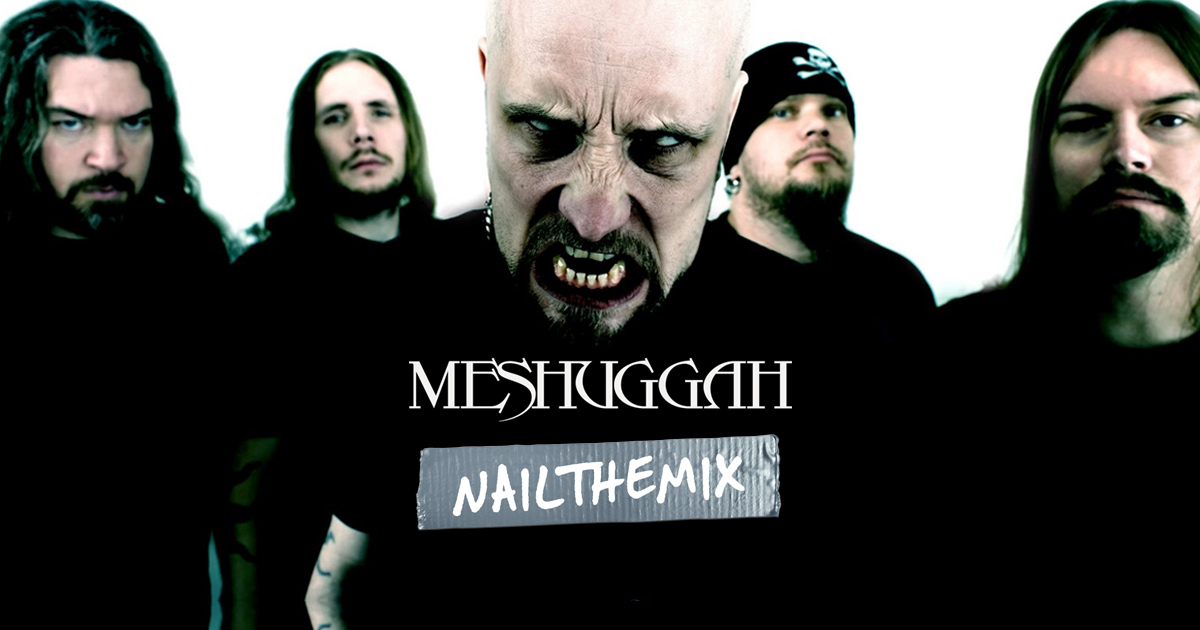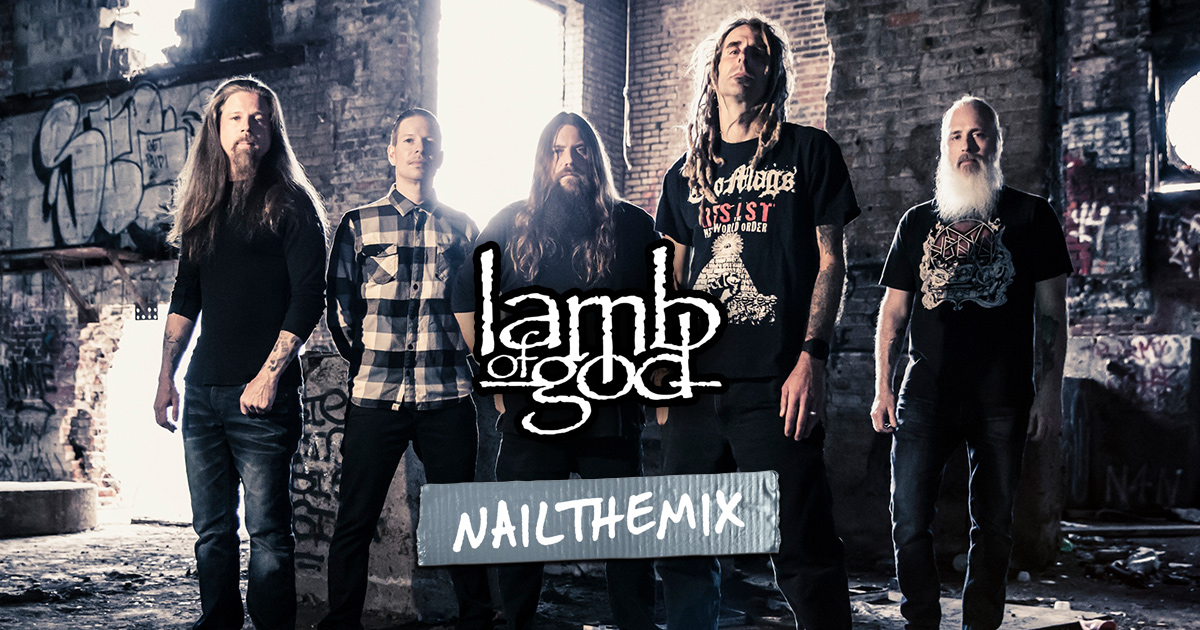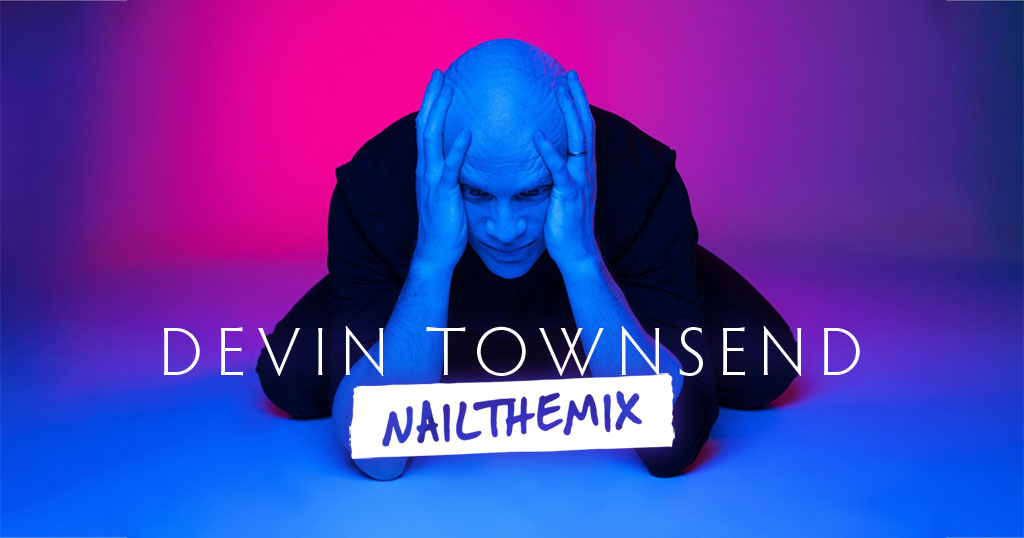
FabFilter Pro-Q 4: Next-Level EQ For Your Metal Mixes?
Nail The Mix Staff
What Makes FabFilter Pro-Q 4 Stand Out for Metal?
Pro-Q has always been a favorite for its clean interface and surgical capabilities. Version 4 builds on that with features that can be particularly potent when you're wrestling with dense, high-gain metal arrangements.
Surgical Precision: When Every dB Counts
Metal mixes are often a battle for space. Detuned, multi-tracked guitars, thunderous drums, and aggressive vocals all fighting for their spot. This is where Pro-Q 4’s detailed approach shines.
- Ultra-Detailed Display & Many Bands: The large, interactive EQ display and the ability to add a plethora of bands let you get incredibly granular. Need to notch out a nasty resonant peak in a distorted guitar around 3.5kHz without gutting the aggression? Or find that exact muddy frequency in your 8-string guitars that’s clashing with the bass (often lurking somewhere between 150Hz and 400Hz)? Pro-Q 4 makes this visual and intuitive.
- Specific Metal Applications:
- Taming Cymbal Hell: Overheads can be a nightmare of harsh resonances. Use narrow Q (bandwidth) settings to pinpoint and gently pull down those ice-pick frequencies (often 6kHz-12kHz) without making your cymbals sound dull.
- Kick Drum Click vs. Boom: Sculpt the attack of your kick with a precise boost (maybe around 4-6kHz for that beater click) and carve out any boxiness (e.g., 300-500Hz) or uncontrolled boom (80-120Hz) with surgical cuts.
- Guitars That Cut, Not Kill: Find that sweet spot for guitar presence (often 1.5-4kHz) and carefully notch out any "fizzy" or "honky" build-up that makes them abrasive.
https://www.youtube.com/watch?v=-lrgiY5Jy5k
This level of detail aligns with the idea that while any EQ can make broad strokes, some EQs, like Pro-Q 4, are built for when you need to perform sonic surgery.
Dynamic EQ: Your Secret Weapon for Aggressive & Clear Mixes
This is where Pro-Q 4 starts to feel less like "just another EQ" and more like a specialized problem-solver. Dynamic EQ bands react to the input signal, only cutting or boosting when a certain threshold is crossed. For metal, this is HUGE.
- Vocals That Dominate (Without Being Annoying): Got a screamer whose sibilance (those harsh ‘sss’ sounds) pierces through when they really let loose? A dynamic band in Pro-Q 4 can dip those frequencies (e.g., 5-8kHz) only when they get too loud, preserving brightness the rest of the time. This is miles better than a static cut that dulls the whole performance.
- Controlling Palm-Mute Chug: Rhythm guitars with heavy palm-muting can build up low-mid energy (say, 150-300Hz) that clouds the mix. A dynamic band can gently attenuate this build-up only on the loudest chugs, keeping things tight without thinning out the overall tone.
- Snare Drum Taming: That one annoying snare ring that only pops out on the hardest hits? A dynamic EQ band can notch it out (e.g., find the offending frequency between 400Hz-1kHz) just on those specific hits.
- Bass Guitar Presence: Want your bass to cut through those dense guitar walls but not be a constant boomy mess? Try a dynamic boost in the bass guitar's midrange (e.g., 800Hz-1.5kHz) that only kicks in when the guitars are particularly thick, or when the bass plays higher notes that need help.
Many stock EQs lack this dynamic capability, making Pro-Q 4 a significant step up for these kinds of precise, adaptive tweaks.
Phase Modes: Keeping Your Low End Tight & Punchy
EQ inherently messes with the phase relationships in your audio. This can be subtle, or it can be a problem, especially in the low end or when using parallel processing. Pro-Q 4 offers various phase modes:
- Zero Latency: Great for tracking or when you need instant response.
- Natural Phase: FabFilter's default, designed to sound good with analog-style phase shift. Often a great starting point.
- Linear Phase: This mode avoids phase shift altogether, which can be crucial for tasks like EQing a master bus, a drum bus, or individual drum tracks that are also being sent to a parallel compression bus. The trade-off is higher latency and potential pre-ringing artifacts if used aggressively.
For metal, maintaining a tight, punchy low-end between your kick and bass is paramount. Using Linear Phase mode on your drum bus or master bus for broad tonal shaping can help preserve that critical phase coherency.
User Interface & Workflow: Can It Speed You Up?
FabFilter plugins are generally lauded for their GUIs, and Pro-Q 4 is no exception. It’s clean, responsive, and highly visual.
- The "Does it Mess With Your Head?" Test: As we often say at Nail The Mix, if a plugin’s interface is confusing or distracting, you’re less likely to do your best work with it. If Pro-Q 4’s layout and visual feedback (like the built-in spectrum analyzer showing pre/post EQ, or the sidechain spectrum visualization) help you make smarter EQ decisions faster, then that’s a win.
- Speed and Intuition: Features like easily creating bands, soloing bands, mid/side processing per band, and the piano roll display for note-to-frequency correlation can genuinely speed up your workflow once you’re familiar with them.
But Do You Really Need Pro-Q 4? The NTM Perspective on EQs
Okay, Pro-Q 4 clearly has some killer features. But let’s pump the brakes and talk about the bigger picture, the Nail The Mix philosophy on plugins.
The "Skill Over Tools" Mantra
We’ll say it 'til we’re blue in the face: your skills are VASTLY more important than your tools. A seasoned engineer like Jens Bogren or Andy Sneap could take your DAW’s stock EQ and mix a face-melting metal track. Why? Because they know what they’re listening for and how to achieve it. Pro-Q 4 is not a magic wand that will instantly fix poor recording choices or a lack of understanding of fundamental EQ principles.
Want to truly master EQ, regardless of the plugin? Understanding core concepts is key. You can dive deeper into EQ strategies for modern metal here.
When Does the Specific EQ Matter? (And When Doesn't It?)
It matters to a degree, depending on the task.
- Highly Specialized Tools: If you need to tame high-end fizz in guitars without surgical EQ, a dedicated plugin like Soothe2 is designed for that exact task. If you’re after a specific amp sound, the amp sim you choose (like a Neural DSP Fortin Cali Suite or STL ToneHub) matters immensely. For intricate vocal tuning, a tool like Celemony Melodyne is indispensable. Melodyne is built from the ground up for pitch and time manipulation at a microscopic level. Pro-Q 4, for all its advancements, is an EQ – it’s not going to tune your vocals. Trying to force a general tool into a highly specialized role is often a recipe for frustration. This highlights a key point: knowing when a specialized plugin is non-negotiable versus when a powerful generalist tool, used skillfully, will suffice.
- General EQing: For broad strokes – a high-pass filter here, a gentle mid-scoop there – does it really matter if you use Pro-Q 4, your stock EQ, or a Waves SSL E-Channel? Honestly, not as much as you might think. If you know you need to cut 3dB at 400Hz with a medium Q, most quality EQs will get you there.
- Pro-Q 4's Edge: Where Pro-Q 4 (and similar advanced EQs) pull ahead for general EQing is when its specific features (dynamic EQ, phase modes, exceptional GUI, per-band M/S) make a complex task easier, faster, or even possible in a more elegant way than with a simpler tool.
Avoiding "Plugin Acquisition Syndrome" (PAS)
We’ve all been there. You see a top producer using a certain plugin, and you think, "That’s the secret!" So you buy it, and… your mixes sound pretty much the same. That’s Plugin Acquisition Syndrome (PAS). Don’t fall for the trap of thinking Pro-Q 4 (or any plugin) is a shortcut. You don’t need 19 different EQs. You need to deeply learn one or two versatile ones. If you already have a good EQ you’re comfortable with, spend more time mastering it before jumping to the next shiny object.
Practical Pro-Q 4 Tips for Your Next Metal Mix
If you do have Pro-Q 4 or are considering it, here are a few ways its features can directly address common metal mixing challenges:
Taming Fizz on High-Gain Guitars (Without Losing Bite)
That nasty high-frequency sizzle (often 5kHz-10kHz, sometimes higher) on distorted guitars can be a real pain.
- Pro-Q 4 Approach: Use a dynamic EQ band. Set it to dip those fizzy frequencies only when they poke out aggressively. This keeps the air and aggression when the guitar isn’t maxed out. Alternatively, for constant fizz, use a very narrow static cut, listening carefully to ensure you’re not dulling the tone too much. This is similar to the surgical EQ cuts Fredrik Nordström mentioned for those Bring Me The Horizon tones.
Carving Space for Kick and Bass in a Dense Mix
The eternal battle! Kick and bass fighting for low-end dominance.
- Pro-Q 4 Approach:
- Sidechain Dynamic EQ: Place Pro-Q 4 on your bass track. Create a dynamic band in the bass's low-end (e.g., 60-100Hz, where the kick primarily hits). Engage the external sidechain for this band and feed it from your kick drum. Set the band to duck a few dB whenever the kick hits. Instant clarity without making your bass thin.
- Spectrum Analyzer FTW: Use Pro-Q 4’s spectrum analyzer on both tracks (you can often overlay them or view them in context) to visually identify the exact frequencies where they’re clashing the most, then make targeted cuts.
Enhancing Vocal Clarity Over Crushing Guitars
Getting vocals to sit on top of a wall of distorted guitars without being harsh or thin is an art.
- Pro-Q 4 Approach:
- Dynamic Vocal Presence: On your lead vocal, try a dynamic band in the upper midrange (say, 2kHz-5kHz). Set it to boost slightly only when the vocalist is singing, helping them cut through.
- Guitar Ducking (Subtly!): On your main guitar bus, set up a dynamic band in that same vocal presence range, sidechained to the lead vocal. A very slight (0.5-1.5dB) attenuation in the guitars when the vocal is active can create space almost imperceptibly.
Polishing the Drum Bus
Your drum bus is a great place for Pro-Q 4’s more advanced features.
- Linear Phase for Tonal Shaping: If you're doing broad EQ moves on the entire drum kit (e.g., a gentle high-shelf for air, or a low-mid cut for clarity), consider using Linear Phase mode to prevent phase smearing that could weaken your transients or mess with kick/snare relationships. This is especially important if you're also using parallel processing on your drums. If you're smashing a parallel drum bus with compression, keeping phase tight on your main bus is even more critical. (Want to dive deeper into drum compression? Check out metal compression secrets here).
- Dynamic Cymbal Control: A dynamic high-shelf on the drum bus can gently tame overly bright cymbals across the kit, reacting only when they exceed a certain level.

100+ Insanely Detailed Mixing Tutorials
We leave absolutely nothing out, showing you every single step
Pro-Q 4 and Your Workflow: Beyond Just Features
Remember, a plugin is only as good as how it integrates into your way of working.
The Latency Conversation (Again)
Every plugin adds some processing time. Pro-Q 4 is no different, and its Linear Phase mode adds significant latency. Most DAWs have automatic delay compensation (ADC), but it’s not always perfect (Pro Tools users from the mid-2000s will have PTSD about this with parallel auxes).
- Be Mindful: Especially with parallel signals (e.g., clean drum bus vs. parallel compressed drum bus), differing latencies can cause phasing. Pro-Q 4’s Zero Latency mode is great for tracking or when you can't afford any delay. Natural Phase is a good all-rounder. Use Linear Phase judiciously, typically on buses or the master, where its benefits outweigh the latency hit.
Is It Right For You?
If Pro-Q 4's GUI makes sense to your brain, if its dynamic EQ solves recurring problems you face, and if its precision helps you make better decisions faster, then it could be a fantastic addition to your toolkit.
However, if you're still getting to grips with basic EQ concepts – what frequencies do what, how Q-width affects the sound, common problem areas – master those fundamentals with your stock EQ first. An expensive plugin won’t teach you that.
The Bottom Line: Tool or Crutch?
FabFilter Pro-Q 4 is, without a doubt, an exceptional EQ plugin. It offers an incredible depth of features, surgical precision, and a workflow that many producers love. For metal, its dynamic EQ and phase control options can be genuine game-changers for tackling common mix problems.
But – and it’s a big but – it’s still just a tool. It won’t magically transform your mixes if your ears, skills, and decision-making aren’t there yet. The most important thing you can invest in is your knowledge and your ability to hear what needs to be done.
Want to see how pro metal producers leverage advanced EQs (and a whole arsenal of other tools) in real-world mixing sessions? At Nail The Mix, you get to be a fly on the wall as world-class engineers mix massive tracks from bands like Gojira, Periphery, and Lamb of God, from scratch. They explain every plugin choice, every EQ tweak, every automation move. It’s not just about seeing what they use; it’s about understanding the why behind their decisions.
If you’re ready to go beyond presets and truly Unlock Your Sound and learn how to mix modern metal, come see what Nail The Mix is all about. Pro-Q 4 might be a powerful sword, but knowing how to wield it (or any sword, for that matter) is what wins the battle.
Get a new set of multi-tracks every month from a world-class artist, a livestream with the producer who mixed it, 100+ tutorials, our exclusive plugins and more
Get Started for $1





